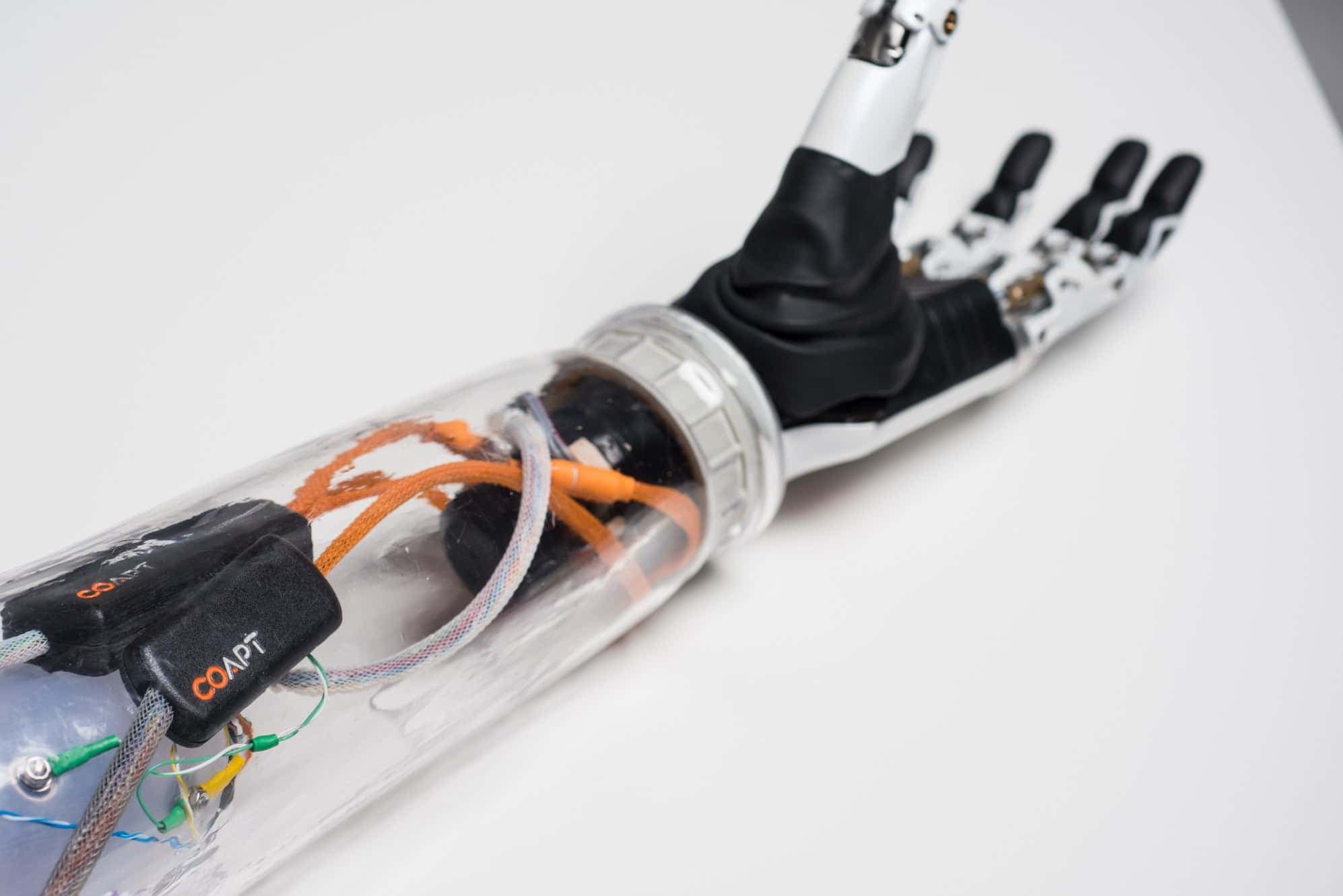A Helping Hand
“The idea is that we’re able to translate thoughts into motion,” says Mike McLaughlin of the Johns Hopkins Applied Physics Laboratory, the creators of the Modular Prosthetic Limb. Hopkins is one of the engineering initiatives that have recently brought advancements in prosthetics and bionic limbs, improving comfort and utility for upper-arm amputees.
Studies from biomedical engineers from Bloorview Research Institute have revealed the inefficiency of market-available prosthetic arms, indicating that up to 75% of users reject and abandon their reconstructed limbs. Most arms available rely on controls developed in the 1950s; they had clunky cables, harnesses. The sensors used were just not intuitive enough for comfortable use.
In 2013, Coapt introduced a prosthetic arm enhanced with an new control system that can recognize subtle nerve signals. Coapt uses pattern recognition to decode electric signals from the remaining arm muscles, with an algorithm focused on intuitive learning to produce graceful, natural movement. DEKA Research and Development Corp. from Manchester uses the Coapt technology in their bionic arm LUKE, intelligently named after Luke Skywalker's prosthesis in Star Wars.
Limits To Overcome
Still, none of these prosthesis systems work like a real hand. Pre-programmed controls are what makes the robotic extensions work. Coapt lets the user pre-program about six to eight movements for everyday use: pointing, pinching, and making a fist, to name a few.
What limits the technology is the sheer complexity of our body. “If you move your arm, there are probably 500 million neurons involved. Right now, the best we can do is see a few hundred of those neurons,” says McLaughlin.
Scientists hope that future prosthesis can let amputees regain control by tapping into the brain’s symphony directly, by implanting electrodes under the skin or even directly into the brain. It's easy to take for granted our automatic, well-organized machine of a body—a simple wave hello or a handshake greeting is nearly thoughtless action. Someday soon, technology may let us overcome these physical limitations.
Share This Article
